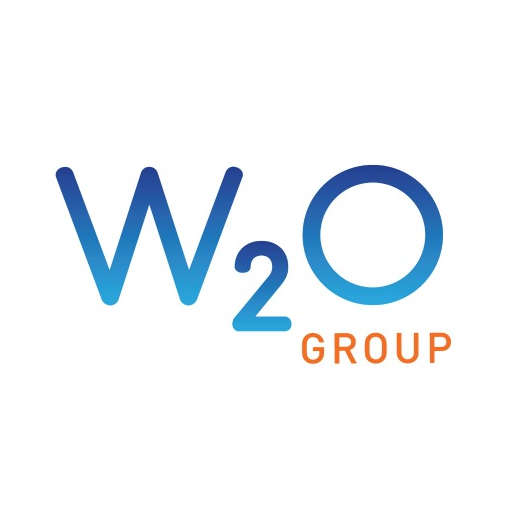W2O Group 15 Aug 2016 // 5:54PM GMT

The Case for Chemistry
With organizational effectiveness – employee engagement, internal communications, organizational clarity – now at the top of many CEO agendas, corporate communicators are moving quickly to shore up strategy, programming, execution, and systems in this area. As such, identifying the right partner is now more critical than ever.
Given the sophistication comprising today’s organizational communications – audience segmentation, channel/platform diversity; relevant content; provocative messaging; social/digital expectations; and generational shifts all requiring new managerial behaviors, a one-size fits all approach has gone the way of the dinosaurs. The challenge, though, is that everyone uses the same language to promote themselves making it difficult for organizations to determine exactly what they are getting.
Further, organizations may believe they need strategic advice but in fact are looking for the newest shining object. And strategy-oriented firms offering tactical support can fall short on execution.
To mitigate this mess, it’s important to first understand the type of skills and expectations that are needed based on the goals and parameters of the assignment.
Hiring strategists for an executional effort will be as frustrating as retaining an execution-oriented firm and expecting solid, strategic advice. Further, believing you need execution when in fact you need a more strategic approach to address such areas as culture transformation can be a disaster to both the effort and one’s career as well.
The following is a guide to help discern exactly what and how to obtain the services and support necessary to deliver the results being sought.
Before You Seek Support
The most important work actually happens before you solicit outside support. Follow this three step process and odds are you will dramatically improve your results:
1. Scoping the Assignment
Considerations
- What is the nature of the work?
- What deliverables are necessary?
- How are you measuring results? (business-focused – outcomes; communications-oriented – outputs)
- What type of research/analysis is needed?
- What will your staff own vs. outside counsel/support?
- Are you looking to complement internal skills or supplement them?
- Will outside support be visible to leadership? If so, how?
2. Sizing up the Options
What are you looking for?
Given the above, this question forces an examination of the counsel and support necessary to deliver on the objective(s).
Strategist
- Addresses the “Why” – assesses challenges and opportunities based on “uber” business goals vs. tactical considerations
- Example: Would never design a “Twitter strategy” but would develop a social platform approach, which includes Twitter, based on business strategy and imperatives
- Business strategy oriented (and its relationship to employee performance)
- Example: Workforce alignment and belief begins with a clear comprehension of business strategy and its impact on daily performance
- Can recognize the Company type from a culture standpoint recommending the approach and content
- Example: Is it entrepreneurial, institutional/stable, created, rapidly changing?
- Can assess the company’s Management model suggesting ways to improve as well as respecting nuance
- Provides counsel and recommendations per the situation or what’s called the Situational approach
- Data-oriented
- Example: utilizes analytics and insights to better grasp behavior, influence
- System design/Platform agnostic
- Objective: Initiate dialogue, discussion, debate
Tactician
- Tackles the “What” and “How”
- Executes against a communications oriented set of objectives and goals
- Communications tactic-specific
- Example: would execute a “Facebook” strategy vs. deciding if it made sense
- Message-oriented
- Event organization and implementation
- Instinct guided; Process-based
- Objective: Generate awareness
One important reality is that strategic firms can also provide executional or tactical support while tactical firms are much more challenged in this regard. So be very specific in terms of defining scope. In addition, it’s also beneficial to determine if your firm partner – whether a strategist or tactician – can also train and develop your staff in areas important to your goals.
Chemistry is Crucial
Another aspect of ensuring the proper partnership between the business and an outside resource is the criticality of chemistry. Competence and capability are in fact table stakes. More often than not, the difference is in whether the two organizations truly enjoy learning from one another and working together. Do they respect each other’s strengths and perspectives? Do they listen to each other? Do they trust each other? Can they align yet also challenge the status quo?
Chemistry equates to partners who take the time to care. To understand nuance. To respect culture but are not paralyzed by it. To learn the business in deep ways not just t a superficial level.
Chemistry trumps all!
Bigger isn’t often Better
Throughout my career working in large companies and large, mid-sized and boutique firms, I’ve experienced the perception that Big is better. The reality though is that Big or Small only works when they think and act “Clearly.”
Great work comes from the minds of people who are totally engaged in the effort. It has little to do with the size of the firm or organization. Who is leading your business from the firm side? Who is leading the effort from the organization or client side?
I’ve seen a large organization brought down to the size of an old country store because of how it was managed. I’ve also seen how bureaucracy can dampen creative fire and dumb down big ideas.
Delineation of Responsibilities
Another extremely important consideration when determining who you need to partner with on organizational communications is to first establish the roles and responsibilities of your team. What will they be handling? How will they interact with the outside partner? How visible with the outside partner be inside the organization?
Outlining the parameters of the relationship at the outset mitigates unnecessary effort and drama resulting in more efficient relationship throughout the assignment.
Getting it Right
In an ever-changing world of seemingly continual business disruption as technology enables new, unexpected competitors to emerge in the blink of an eye, the role of organizational (internal) communications becomes more important than ever – reaching the right people with the right information and motivation resulting in clarity and buy-in to enact business strategy.
Aggregating the right resources – internal and external – to build workforce engagement creates a common approach and clear direction.
Making the right choice of outside partner in terms of need, expectation, skills, deliverables, timing, and chemistry is invaluable to achieving success.
It really comes down to discerning if you need a new leadership blog or a sustainable model for reaching, educating, and motivating your workforce to achieve business goals.
Both are important but require different capabilities along with a different mindset.
To that end, a little preparation upfront will go a long way to gaining the right results for everyone involved.
What Are You Chasing?
The Key Questions that distinguish “cause” from “symptom” when framing an assignment
Properly framing an assignment goes a long way to ensuring the right outcome. The following framework is a helpful guide to getting it right at the outset:
1. Establish/Reinforce Company/Product “Value” Proposition – Why?
2. Recalibrate/Re-tell Company/Product Narrative to Break-Through – What?
3. Engage/Extend with a Current or Different Audience – Who?
4. Clarify/Educate on Company/Product/Process/Policy/Decision – How?
5. Enter/Mitigate a Discussion/Debate – When?
By Gary Grates, Principal at W2O Group


































.jpg)














